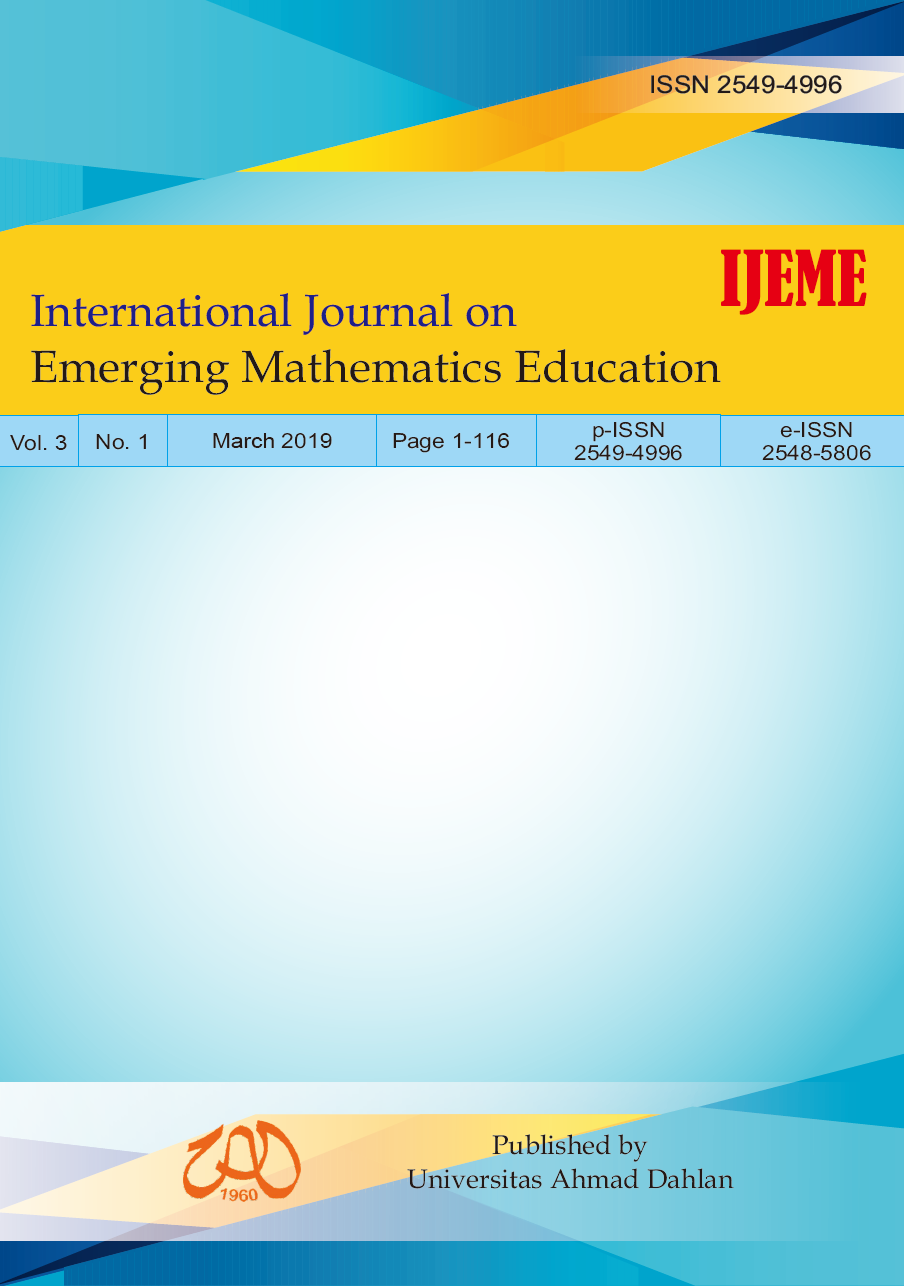Mathematics Curriculum Review by Advancing the Use of Learning Design Map and Subjects Classification
DOI:
https://doi.org/10.12928/ijeme.v3i1.11929Keywords:
mathematics curriculum, curriculum review, learning design map, mathematics subjects classificationAbstract
Curriculum review is a long process. Typically, the people responsible for these activities are one or two people (coordinators) who are responsible for this and it can be burdensome. Authors propose a new computer-based method for mathematics curriculum review by advancing the use of Learning Designs Maps (LDMaps). The LDMaps have already been developed by authors to document expected mathematics teaching and learning experiences as expected by curriculum. The proposed method can disperse the process allowing the responsible coordinators to conduct the simple task of collating available LDMaps for the review. In this paper, an example of mathematics curriculum review in counting mathematics subjects classification entries is presented.References
Davis, E. (1981). Teachers as Curriculum Evaluators. Sydney: George Allen & Unwin Australia Pty Ltd.
Dressel, P. L. (1965). The need for curriculum review: courses, qualities, and costs. Journal of Higher Education 36(8), 443–448.
Fathurrohman, M., Porter, A., and Worthy, A., L. (2012). Maps of Learning De-signs for Teachers in Developing Countries to document and share mathematical teaching and learning experiences. The 12th International Congress on Mathematical Education (ICME-12), Seoul, South Korea.
Hill, H., C., and Charalambous, C., Y., (2012). Teacher knowledge, curriculum ma-terials, and quality of instruction: Lesson learned and open issues, Journal of Curriculum Studies, 44(4), 559-576.
Kallick, B. & Colosimo, J. (2009). Using Curriculum Mapping and Assessment Data to Improve Learning. Thousand Oaks, California: Corwin Press
Lee, P., Y (2010). Designing a mathematics curriculum. Journal on Mathematics Education 1(1), 1-10.
Matthews, K. E., Adams, P., and Goos, M. (2009). Putting it into perspective: mathematics in the undergraduate science curriculum. International Journal of Mathematical Education in Science and Technology 40 (7), 891-902.
McKenney, S. (2008). Shaping computer-based support for curriculum developer. Computers & Education, 50(1), 248-261.
Naseer, M., S. (2018). Impact of Professional Development Training Curriculum on Practicing Algebra Teachers. International Journal on Emerging Mathematics Education, 2(2), 187-202
Revina, S., and Leung, F., K., S. (2018). Educational Borrowing and Mathematics Curriculum: Realistic Mathematics Education in the Dutch and Indonesian Primary Curriculum. International Journal on Emerging Mathematics Education, 2(1), 1-16
Ross, S., W., Morrison, G., R., Hannafin, R., D., Young, M., Akker, J., Kuiper, W., Richey, R., C., and Klein, J., D. (2008). Research Designs. In Spector, J., M., Merrill, M., D., Merrienboer, J., V., and Driscoll, M., P. (2008). Handbook of Research on Educational Communications and Technology. New York: Routledge.
Downloads
Published
How to Cite
Issue
Section
License
License and Copyright Agreement
In submitting the manuscript to the journal, the authors certify that:
- They are authorized by their co-authors to enter into these arrangements.
- The work described has not been formally published before, except in the form of an abstract or as part of a published lecture, review, thesis, or overlay journal. Please also carefully read the International Journal on Emerging Mathematics Education (IJEME) Author Guidelines at http://journal.uad.ac.id/index.php/IJEME/about/submissions#authorGuidelines
- That it is not under consideration for publication elsewhere,
- That its publication has been approved by all the author(s) and by the responsible authorities, tacitly or explicitly, of the institutes where the work has been carried out.
- They secure the right to reproduce any material that has already been published or copyrighted elsewhere.
- They agree to the following license and copyright agreement.
Copyright
Authors who publish with the International Journal on Emerging Mathematics Education (IJEME) agree to the following terms:
- Authors retain copyright and grant the journal the right of first publication with the work simultaneously licensed under a Creative Commons Attribution License (CC BY-SA 4.0) that allows others to share the work with an acknowledgment of the work's authorship and initial publication in this journal.
- Authors are able to enter into separate, additional contractual arrangements for the non-exclusive distribution of the journal's published version of the work (e.g., post it to an institutional repository or publish it in a book), with an acknowledgment of its initial publication in this journal.
- Authors are permitted and encouraged to post their work online (e.g., in institutional repositories or on their website) prior to and during the submission process, as it can lead to productive exchanges, as well as earlier and greater citation of published work.
![]()
Ciptaan disebarluaskan di bawah Lisensi Creative Commons Atribusi-BerbagiSerupa 4.0 Internasional.





